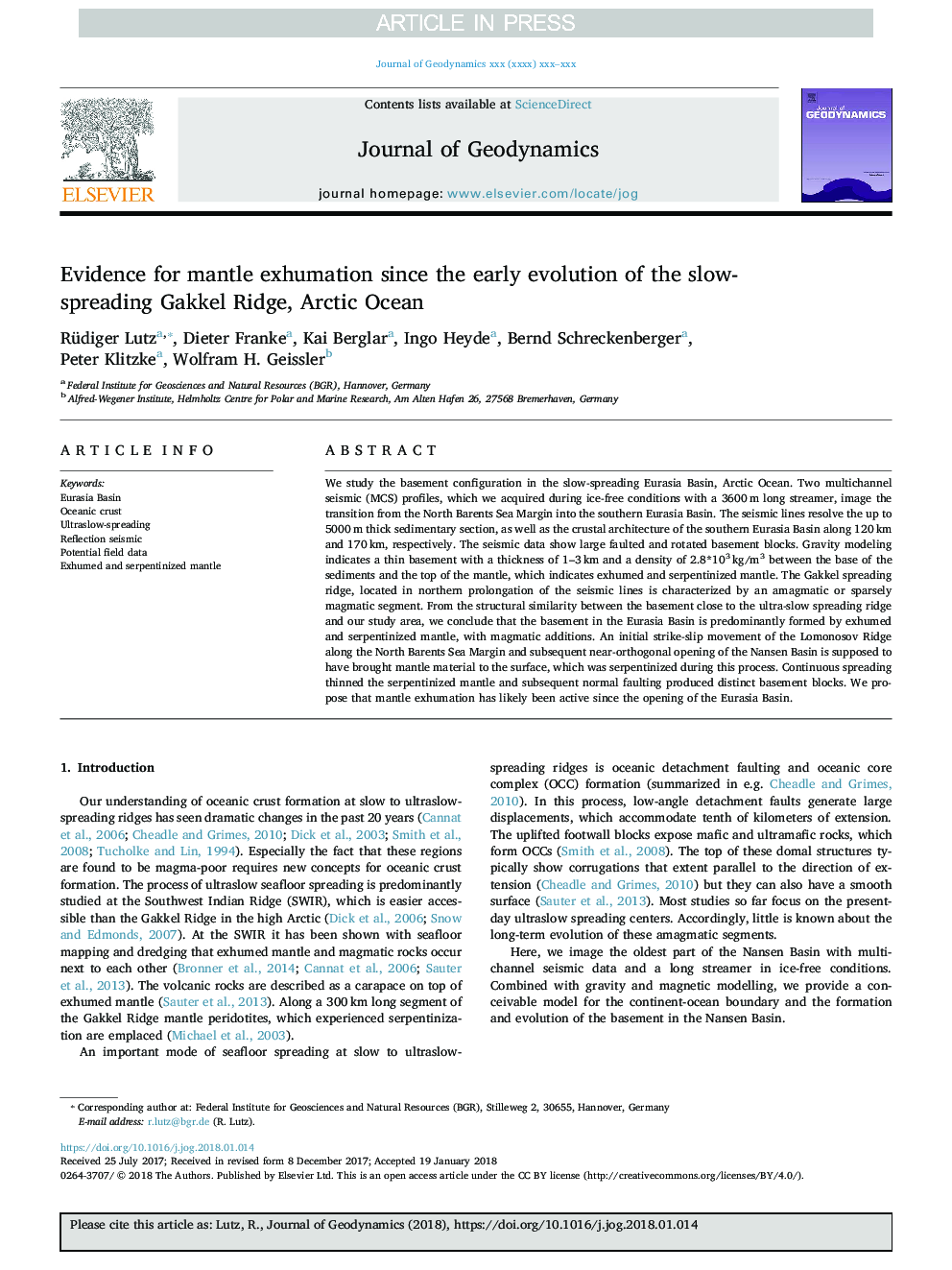| Article ID | Journal | Published Year | Pages | File Type |
|---|---|---|---|---|
| 8908400 | Journal of Geodynamics | 2018 | 12 Pages |
Abstract
We study the basement configuration in the slow-spreading Eurasia Basin, Arctic Ocean. Two multichannel seismic (MCS) profiles, which we acquired during ice-free conditions with a 3600â¯m long streamer, image the transition from the North Barents Sea Margin into the southern Eurasia Basin. The seismic lines resolve the up to 5000â¯m thick sedimentary section, as well as the crustal architecture of the southern Eurasia Basin along 120â¯km and 170â¯km, respectively. The seismic data show large faulted and rotated basement blocks. Gravity modeling indicates a thin basement with a thickness of 1-3â¯km and a density of 2.8*103â¯kg/m3 between the base of the sediments and the top of the mantle, which indicates exhumed and serpentinized mantle. The Gakkel spreading ridge, located in northern prolongation of the seismic lines is characterized by an amagmatic or sparsely magmatic segment. From the structural similarity between the basement close to the ultra-slow spreading ridge and our study area, we conclude that the basement in the Eurasia Basin is predominantly formed by exhumed and serpentinized mantle, with magmatic additions. An initial strike-slip movement of the Lomonosov Ridge along the North Barents Sea Margin and subsequent near-orthogonal opening of the Nansen Basin is supposed to have brought mantle material to the surface, which was serpentinized during this process. Continuous spreading thinned the serpentinized mantle and subsequent normal faulting produced distinct basement blocks. We propose that mantle exhumation has likely been active since the opening of the Eurasia Basin.
Related Topics
Physical Sciences and Engineering
Earth and Planetary Sciences
Earth-Surface Processes
Authors
Rüdiger Lutz, Dieter Franke, Kai Berglar, Ingo Heyde, Bernd Schreckenberger, Peter Klitzke, Wolfram H. Geissler,
